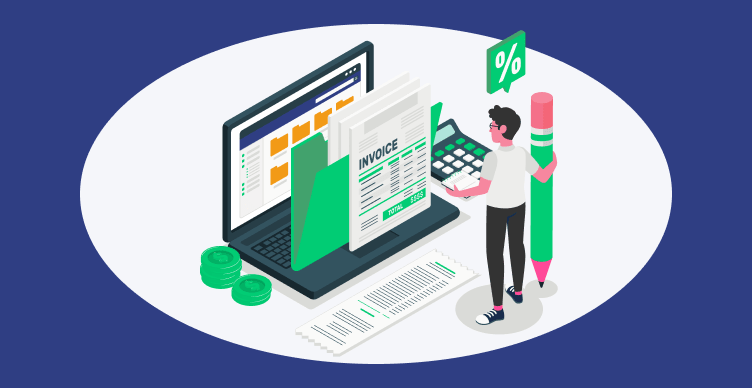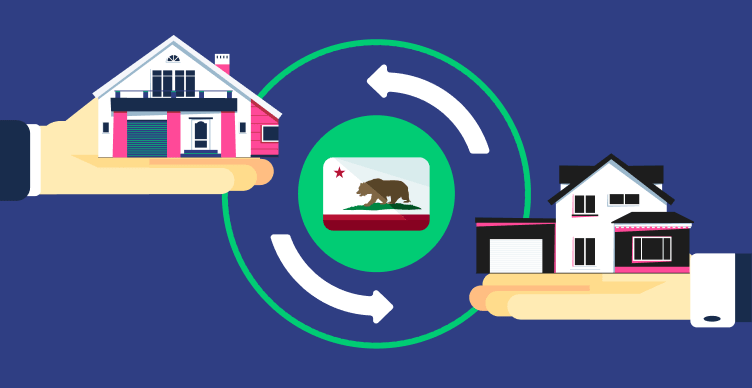Real estate investing is full of numbers, calculations, and equations designed to help you make better decisions and understand more about your portfolio and its potential. There are also some calculators designed to help you figure out your financing options in various situations.
A loan-to-value ratio calculator falls into that category, and this comprehensive guide is here to explain what it does and how you can apply it.
What Is a Loan to Value Ratio?
Put simply, loan to value (LTV) ratio is the amount of a loan compared to the property cost the loan is to cover. It most commonly applies to home and apartment mortgage finance- a.k.a. what percentage of the overall property cost or value is covered by a mortgage loan.
LTV ratios are always shown as percentages, and lenders use than percentage figure to determine their risk level when accepting an application. Across most lenders, 80% is the cut-off point at which they feel comfortable lending without further assurances.
That doesn't mean you can still take out a loan for a property at more than 80% of the value- but it might mean you need to pay a higher interest rate or take out loan insurance.
LTV ratio calculations can also be applied to personal loans.
The Loan to Value Ratio Calculator Formula
The loan-to-value ratio formula is pretty simple. You divide the loan amount by the property value to find the LTV ratio. There are sometimes a few other variables and terminologies used, but this is the equation in effect.
Variables and Terminology
To help you understand more about LTV ratio calculations, we have provided a slightly more detailed explanation of the variables involved.
Property Value
You may often see the term current appraised value instead of property value. This is because there is no guarantee that the purchase price will be the same as the value, so you can only use the most recent data for an accurate LTV ratio assumption.
Even if you already own a property but are looking to refinance or take out a home equity loan, you should use the most recent appraised value (if this is from a while ago, the accuracy is probably not great), not the amount you paid originally.
Loan Amount
Many calculators use the term mortgage amount instead, but for the formula, they mean the same.
If you are trying to work out how much your LTV ratio will be on a new mortgage, you need to establish how much you can pay upfront and how much you would need to borrow to afford the property.
What Affects Loan to Value Ratio?
Here is a little more insight into each variable and how they impact your LTV ratio calculations.
The Type of Transaction
Loan-to-value ratio calculations are used in a few different ways in real estate transactions, so the type of action you are trying to take will influence the way the number is calculated.
In every case, the calculation is based on an amount you want to borrow against the value of the asset- but the specifics are different.
The most straightforward ratio is property value compared to the down payment amount for a mortgage loan, but the ratio is also applicable to refinances, home equity loans, and more.
Total Value of the Property (Current Appraised Value)
Regardless of the transaction type, the current appraised value of a property (how much you could realistically sell the one you own for or the amount you would expect to pay for the one you want to buy) plays a central role in LTV ratio calculations.
The market value of the property you own or want to buy is the base for every loan-to-value ratio calculation because, in one way or another, you are asking for money to cover a certain amount of the cost.
If you have $50,000 to invest, for example, but need a loan for the rest, your LTV ratio will be significantly higher if you want to buy a $400,000 house than it would if you went for a $200,000 house.
In transactions that involve a current mortgage balance, someone who only has $50,000 left to pay will have a much lower loan-to-value ratio on a refinance deal or tap their home equity if the market value is only $200,000 instead of $400,000.
To put it simply, the higher the property value, the more LVT potential there is if you can't afford to buy it outright.
Your Down Payment Amount
Like the factor mentioned above, the down payment you have also impacts your loan-to-value ratio in more ways than one.
If you are calculating the ratio for your mortgage loan, a larger upfront payment means less to finance- and a lower balance to pay back if you decide to refinance.
Two investors looking to buy the same property could have vastly different loan-to-value ratios based on how much they can pay at the beginning. If they are both looking at a $400,000 home- one has $50,000 to invest, the other has $100,000.
The second person has a better chance that a mortgage lender will approve their loan request, and it will be easier for them to move on the property quickly.
Your Current Mortgage Balance
Existing mortgage loans also come into play if you are using a loan-to-value ratio calculator to work out how much equity you can tap into for a loan, work out refinancing options, or how much you can borrow for a second mortgage.
Your current loan balance is the principal amount that remains unpaid- meaning the actual loan you took to cover the value of the property.
Before you can refinance, you must calculate the ratio between your outstanding mortgage loan balance and the current appraised value of the property.
A similar situation applies to home equity loans- you have to consider how much of the mortgage loan amount remains unpaid before you know how much you can take out of your home equity. The more principal balance that remains unpaid, the less equity you have in the property to tap into.
Any Other Loans or Liens
Second mortgage balance, outstanding equity loans, and any liens against your property may also be considered if you are looking at a combined loan-to-value ratio calculator.
Some calculators will ask for all the figures and provide you with two outcomes- the first mortgage loan ratio only takes the primary balance into account, but the second covers everything.
Examples Loan to Value Ratio Calculations in Real Estate
Let's start with a simple example.
Someone wants to buy a property valued at $300,000. They have a down payment of $50,000 in mind- making the loan amount $250,000.
- $250,000 (loan) ÷ $300,000 (value) = 83.3%
This means they would be unlikely to get a mortgage without having to pay mortgage insurance and accept a higher interest rate. They can then consider a larger deposit or look at a lower-priced property.
Now, let's use the LTV ratio for someone looking for a home equity loan.
The current appraised value of the property is $250,000. They have $75,000 left to pay off their mortgage and want to tap $50,000 for their loan. These figures combined would make the total loan value $125,000.
- $125,000 (total loan) ÷ $250,000 (current value) = 50%
In theory, these owners should have no trouble securing this loan.
Lastly, let's look at someone planning to refinance. Instead of looking at the loan they want to take, they look at the outstanding balance they already have. Let's say their property is currently worth $500,000, and they have $300,000 left on their principal mortgage balance.
- $300,000 (outstanding loan) ÷ $500,000 = 60%
Most lenders will offer refinancing for anyone with an LTV ratio of 80% or less, so they should be fine.
When and How to Utilize a Loan-to-Value Ratio Calculator for Your Property Investments
The most common use of a loan-to-value calculator is to work out whether or not a potential property investment is in the right price bracket. To do that, you can look at it a few different ways.
- Use the calculator to establish how much down payment you need to make to be in the zone you want for your mortgage.
- Calculate what percentage your mortgage will be when you have a limit on the deposit you can make but know you want a certain property.
- Work out how expensive a property you can afford to buy with your down payment without going over your desired LTV ratio.
You can use the data to find out what you can afford and decide if a bigger down payment is something you want to do. It also gives you a clear idea of whether your proposed loan amount is within the risk boundaries of most lenders or if you should expect a little pushback.
People also use loan-to-value ratio calculators to establish their credit limit when they are considering taking out home equity loans.
Construction projects, renovations, and other property expenses are often financed using loans taken out on the equity a person has in their home or investment property- but how much they can borrow depends on what mortgage balance they have outstanding.
What Is a Good Loan to Value Ratio?
A ratio of more than 80% does not rule out the chances of getting a loan approved, but it does mean you are likely to need private mortgage insurance. This is an additional expense that you need to really think about and decide whether or not it is worth it.
The standard for residential and commercial property financing is 80% or less. As long as your LTV ratio does not exceed 80%, you should be able to get a loan without an increased interest rate.
What Can DoorLoop Do for Real Estate Investors?
If you want to streamline your approach to real estate and rental property management, DoorLoop is the tool you need. The all-in-one software helps you maximize productivity and profitability while improving efficiency and making the property management business more manageable.
DoorLoop also offers a range of calculators to help you run your property management company. Across the board, it provides excellent features and benefits for every aspect of your business.
Schedule a free demo today to learn more and see the benefits firsthand!
Summary
An LTV ratio calculator helps you establish what you can afford to borrow for new purchases, refinance options, and home equity loans. It is a simple calculation that can provide investment advice based solely on a number.











































































































.svg)





















